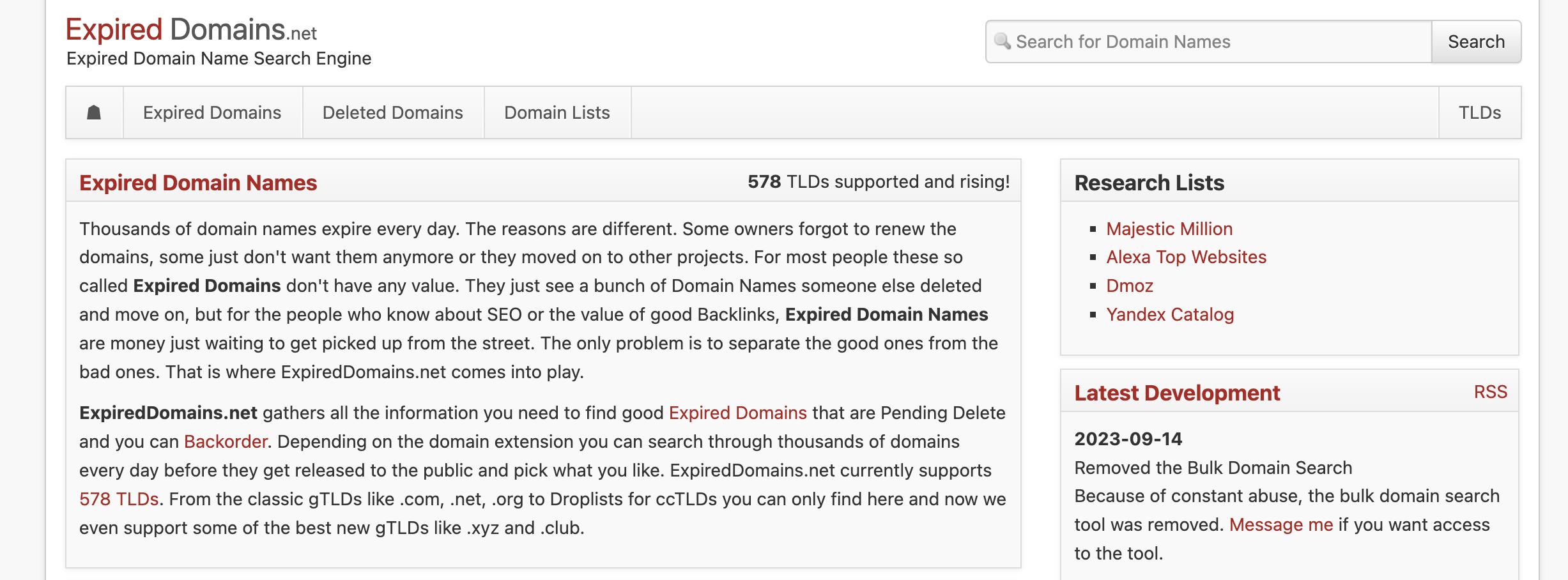SEO is a constantly evolving field that requires you to stay on top of the latest trends and best practices. But sometimes, following the rules can be frustrating, especially when you see your competitors outranking you with shady tactics. That’s when you might be tempted to try some grey hat SEO techniques.
Grey hat SEO is a term that refers to SEO methods that are neither white hat nor black hat, but somewhere in between. They are not explicitly forbidden by search engines, but they are not recommended either. They can give you a short-term boost in rankings, but they can also backfire and harm your site in the long run.
In this guide, we will explore five common grey hat SEO techniques that you should avoid and their white hat alternatives. We will also explain why grey hat SEO is risky and not worth it in the long term. By the end of this guide, you will have a better understanding of what is grey hat SEO and how to do SEO the right way.
Technique #1: Creating Content That Doesn’t Offer Value

One of the most basic principles of SEO is to create high-quality content that matches user intent and provides value. Content is the foundation of your site and your online reputation. It helps you attract, engage, and convert your visitors.
However, some people try to cut corners and create content that doesn’t offer any value to the users or the search engines. They focus on stuffing keywords without providing useful information or solving problems. They use automated tools or spinners to generate low-quality content that is unreadable or irrelevant. They duplicate or scrape content from other sources without adding any originality or value.
This technique is bad for several reasons:
- It can hurt your rankings, as search engines can detect low-quality content and penalize your site accordingly.
- It can hurt your reputation, as users can see through your content and lose trust in your site.
- It can hurt your conversions, as users can bounce from your site without taking any action or buying anything.
The right way to do it is to create high-quality content that offers value to your users and the search engines. Here are some tips on how to do it:
- Do keyword research and understand user intent. Find out what your target audience is searching for and what kind of content they expect to find.
- Write for humans, not for bots. Use natural language and avoid keyword stuffing or over-optimization. Make your content easy to read and understand.
- Provide useful information or solve problems. Answer questions, give tips, share insights, or offer solutions that can help your users achieve their goals.
- Add originality and value. Don’t copy or spin content from other sources. Use your own voice and perspective. Add data, facts, examples, images, videos, or other elements that can enhance your content and make it stand out.
- Optimize your content for SEO. Use keywords strategically in your title, headings, introduction, conclusion, and meta description. Use synonyms and variations of your keywords to avoid repetition and increase readability. Use internal and external links to support your content and improve its relevance.
Technique #2: Using Expired Domains

Another grey hat SEO technique that some people use is buying old domains that have authority and redirecting them to their own site. The idea behind this technique is to leverage the existing backlinks and traffic of the expired domain and transfer them to your site.
For example, let’s say you have a site about gardening and you find an expired domain that used to be a popular gardening blog. You buy the domain and redirect it to your site, hoping to get a boost in rankings and traffic.
This technique is bad for several reasons:
- It can be seen as manipulative and spammy by search engines. Search engines can detect when a domain changes ownership or topic drastically and devalue its authority accordingly.
- It can be ineffective or harmful for your site. The expired domain may have lost its relevance or quality over time. It may have been penalized or de-indexed by search engines for violating their guidelines. It may have been infected with malware or spam links that can harm your site’s security or reputation.
- It can be costly and time-consuming for you. Buying expired domains can be expensive and competitive. You may have to bid against other buyers or pay a premium price for a domain that may not be worth it. You may also have to spend time and resources to maintain the domain, such as renewing its registration, hosting, or SSL certificate.
Still, if done correctly and with a diversified portfolio of expired domains – it can be cost-effective. But this ultimately depends on the niche you are in.
The right way to do it is to build your own domain authority organically through content creation and link building. Here are some tips on how to do it:
- Create high-quality content that attracts and engages your audience. As we mentioned before, content is the key to building authority and trust online. Create content that offers value, solves problems, or entertains your users. Make your content shareable and linkable, so that other sites can reference it and link back to it.
- Build relationships and outreach to relevant sites. Link building is not just about getting links, but also about building relationships with other site owners, bloggers, influencers, or journalists in your niche. Reach out to them and offer them something of value, such as a guest post, a testimonial, a quote, or a resource. Don’t ask for links directly, but rather focus on providing value and building rapport.
- Seek opportunities and partnerships with authoritative sites. Another way to build authority and get links is to seek opportunities and partnerships with authoritative sites in your niche or industry. For example, you can join a directory, a network, an association, or a platform that allows you to publish your content or profile as an author or contributor. You can also participate in events, webinars, podcasts, or interviews that can showcase your expertise and link back to your site.
Technique #3: Buying Links

One of the most common and controversial grey hat SEO techniques is buying links from other websites to boost your rankings. Links are one of the most important ranking factors for search engines, as they indicate the popularity and relevance of your site. The more links you have from reputable sources, the higher your site will rank.
However, some people try to cheat the system and buy links from other websites instead of earning them naturally. They use services or platforms that sell links for a fee, or they pay other site owners directly to link back to their site.
Keep in mind that it is incredibly hard for Google to determine if you are buying links – so this is a viable grey hat tactic. You just need to do it smart – which we covered in our backlink outreach guide.
If done incorrectly – this technique is bad for several reasons:
- It violates Google’s guidelines and can lead to penalties or de-indexing. Google explicitly states that buying or selling links that pass PageRank is against their Webmaster Guidelines. If Google detects that you are buying links excessively, it can lower your rankings, remove your site from its index, or apply a manual action against your site.
- It can damage your credibility, reputation, and trust with customers and search engines. Buying links can be seen as dishonest and unethical by your customers and search engines. It can imply that you are trying to manipulate the system and that you don’t have anything valuable to offer. It can also expose your site to low-quality or spammy sites that can harm your site’s reputation or security.
- It can be ineffective or harmful for your site. Buying links can be a waste of money and resources, as they may not have any positive impact on your rankings or traffic. They may also have a negative impact on your site’s performance or user experience, as they may slow down your site’s loading speed, increase your bounce rate, or decrease your conversions.
The right way to do it is to earn links naturally from reputable sources through content creation and outreach. Here are some tips on how to do it:
- Guest post on relevant and authoritative sites. Guest posting is one of the most effective ways to get links from other sites in your niche or industry. Guest posting is when you write an article for another site and include a link back to your site in the author bio or within the content. To guest post successfully, you need to find relevant and authoritative sites that accept guest posts, pitch them with a topic idea that matches their audience and style, write a high-quality article that follows their guidelines, and include a link back to your site in a natural and relevant way.
- Outreach to relevant sites that mention you or your topic. Another way to get links from other sites is to harness unlinked mentions from other brands, outreach to them and ask them to link back to you. This can be done when you find sites that mention you or your topic without linking back to you, such as a brand mention, a product mention, a quote mention, or a topic mention. Then you can reach out to them and politely ask them to add a link back to your site.
Technique #4: Using Hosted Blogging Platforms to Build Backlinks

Another grey hat SEO technique that some people use is creating blogs on free platforms like WordPress and linking back to their own site. The idea behind this technique is to create multiple blogs on different topics and domains and use them as sources of backlinks for their main site. This is actually the PBN strategy.
For example, let’s say you have a site about gardening and you create several blogs on WordPress.com with names like gardeningtips.wordpress.com, gardeningideas.wordpress.com, gardeninghacks.wordpress.com, etc. You write some articles on these blogs and link back to your main site with keywords like “best gardening tools”, “how to grow tomatoes”, “gardening benefits”, etc.
This technique is bad for several reasons:
- It can be seen as low-quality or duplicate content by search engines. Search engines can detect when you create multiple blogs on the same or similar topics and domains and link back to your own site. They can consider this as a form of content spamming or link farming and devalue or ignore your links accordingly.
- It can be ineffective or harmful for your site. The blogs that you create on these platforms may not have any authority or relevance to your niche or industry. They may not attract any traffic or engagement from your target audience. They may also have a negative impact on your site’s performance or user experience, as they may divert your users away from your site or confuse them with irrelevant or inconsistent information.
- It can be costly and time-consuming for you. Creating and maintaining multiple blogs on different platforms can be expensive and tedious. You may have to pay for the domain registration, hosting, or premium features of these platforms. You may also have to spend time and resources to write, publish, and update content on these blogs, as well as monitor their performance and security.
The right way to do it is to create original and valuable content on your own site or on authoritative platforms that allow you to publish as an author or contributor. Here are some tips on how to do it:
- Publish your content on authoritative platforms that allow you to showcase your expertise and link back to your site. There are many platforms that allow you to publish your content as an author or contributor and include a link back to your site in your bio or within the content. Some examples are Medium, Quora, LinkedIn, Forbes, Huffington Post. These platforms can help you reach a wider audience, build your reputation, and get quality links from reputable sources. Nowadays, this tactic is called Parasite SEO. It is still grey hat – but incredibly effective in 2023.
- Follow the guidelines and best practices of these platforms. Each platform has its own guidelines and best practices that you need to follow when publishing your content. For example, some platforms may require you to write original content that is not published elsewhere, while others may allow you to republish or syndicate your existing content with proper attribution. Some platforms may have specific rules on how to format, optimize, or promote your content, while others may give you more freedom and flexibility. Make sure you read and follow the guidelines and best practices of each platform before publishing your content.
Technique #5: Paying for Reviews

The last grey hat SEO technique that we will discuss is paying for reviews on platforms like Google My Business or Yelp. Reviews are one of the most important factors that influence your online reputation, trust, and conversions. They help you showcase your products or services, attract new customers, and retain existing ones.
However, some people try to manipulate their reviews by paying for positive reviews or offering incentives for them. They use services or platforms that sell reviews for a fee, or they pay their customers directly to leave positive reviews on their site.
This technique is bad for several reasons:
- It violates the guidelines and policies of these platforms and can lead to penalties or removal. These platforms have strict guidelines and policies that prohibit paying for reviews or offering incentives for them. They have systems and algorithms that can detect fake or unnatural reviews and flag them accordingly. If they find out that you are paying for reviews, they can lower your ratings, remove your reviews, suspend your account, or ban you from their platform.
- It damages your credibility, reputation, and trust with customers and search engines. Paying for reviews can be seen as dishonest and unethical by your customers and search engines. It can imply that you are trying to deceive them and that you don’t have anything valuable to offer. It can also expose you to negative feedback or backlash from unhappy customers who feel cheated or misled by your reviews.
- It can be ineffective or harmful for your site. Paying for reviews can be a waste of money and resources, as they may not have any positive impact on your rankings or traffic. They may also have a negative impact on your site’s performance or user experience, as they may increase your bounce rate, decrease your conversions, or trigger spam filters.
The right way to do it is to encourage honest and authentic reviews from your customers through email, social media, or surveys. Here are some tips on how to do it:
- Provide excellent products or services that exceed customer expectations. The best way to get positive reviews is to provide excellent products or services that exceed customer expectations. Deliver high-quality products or services that solve customer problems or fulfill their needs. Provide outstanding customer service that is friendly, helpful, and responsive. Go the extra mile to delight your customers and make them happy.
- Ask for reviews politely and timely. The next step is to ask for reviews politely and timely. Don’t be pushy or aggressive, but rather be courteous and respectful. Don’t ask for reviews too soon or too late, but rather at the right moment when the customer is satisfied and engaged. For example, you can ask for reviews after the customer has completed a purchase, received a delivery, used a product or service, or contacted your support team.
- Make it easy and convenient for customers to leave reviews. The final step is to make it easy and convenient for customers to leave reviews. Don’t make them jump through hoops or fill out long forms, but rather provide them with simple and accessible options. For example, you can send them an email with a link to your review platform, embed a review widget on your site, or integrate a review app on your social media. You can also provide them with clear and concise instructions on how to leave a review, such as what to write, how to rate, or where to post.
Wrapping Up
Grey hat SEO is a term that refers to SEO methods that are neither white hat nor black hat, but somewhere in between. They are not explicitly forbidden by search engines, but they are not recommended either. They can give you a short-term boost in rankings, but they can also backfire and harm your site in the long run.

